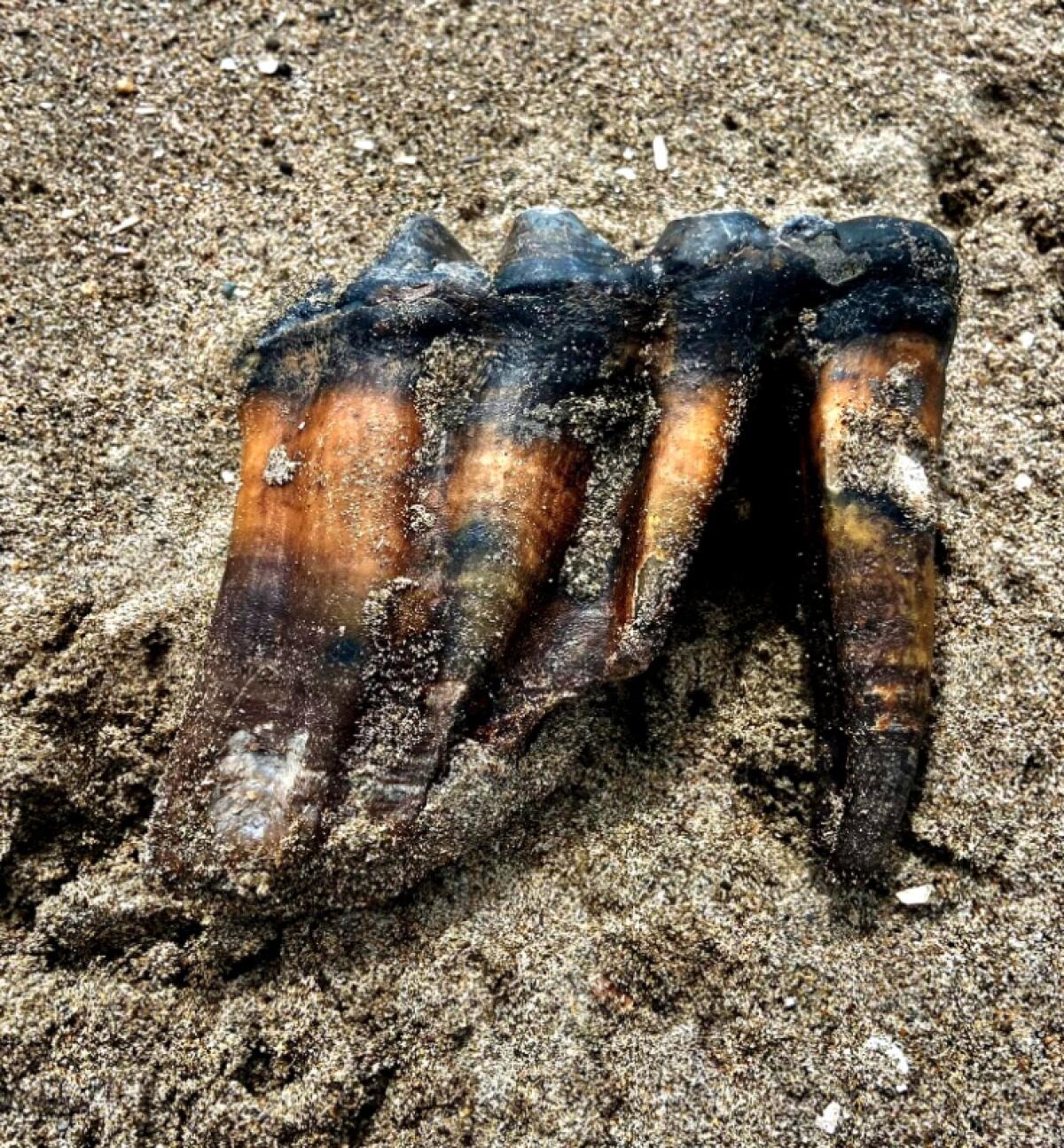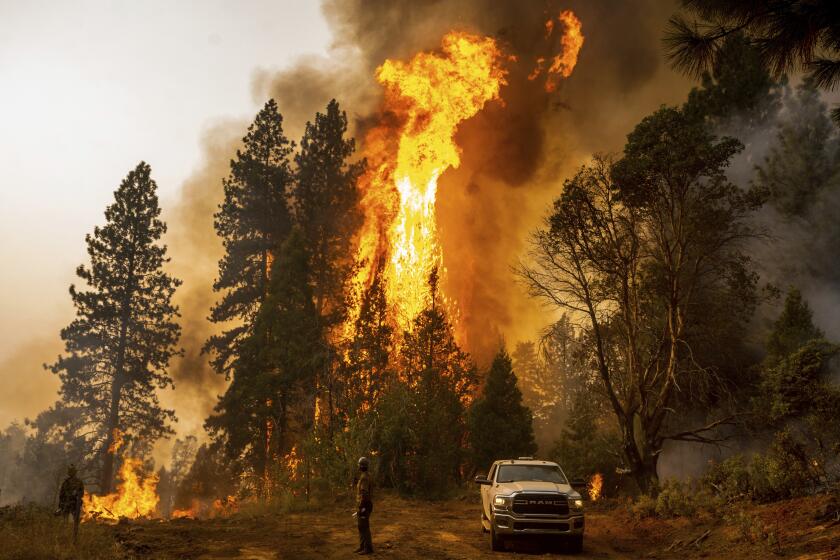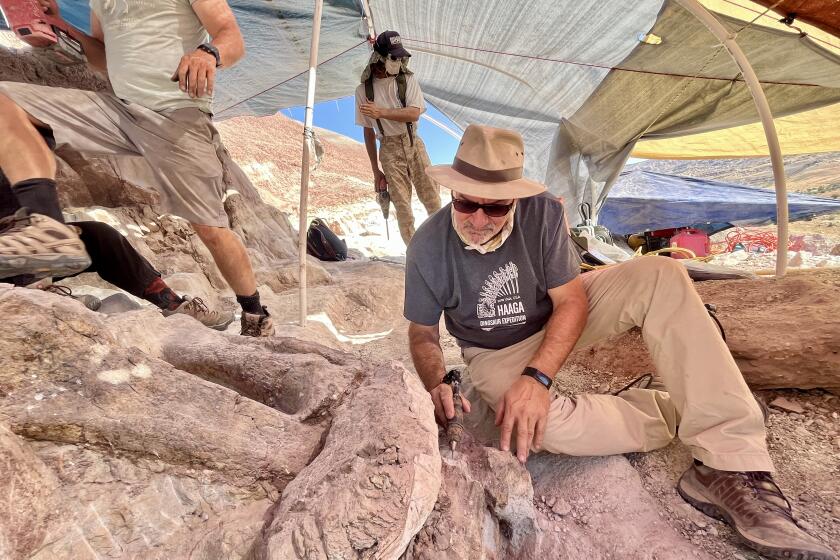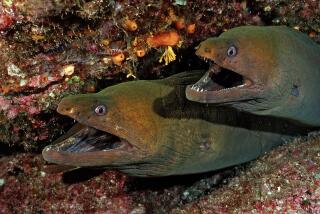Ancient mastodon tooth washes ashore near Santa Cruz, is almost lost to unwitting jogger

Jennifer Schuh was walking along Rio Del Mar State Beach near Santa Cruz during the Memorial Day holiday when she spotted something unusual in the sand.
The foot-long object resembled a piece of driftwood, but Schuh wasnât certain, so she took a picture of it, posted it on Facebook and asked if anyone could help identify it.
âPeople from Aptos find all kinds of stuff washed up on that beach, like horse teeth or fossilized sand dollars,â she said. âAnd I was like, âWell, shoot, Iâm going to post this crazy thing because I have no idea what it is.ââ
Someone in Facebookâs comments section tagged Wayne Thompson, a paleontologist at the Santa Cruz Museum of Natural History. He identified the object as a molar belonging to a Pacific mastodon, an elephant-like mammal that existed between 5,000 and 10,000 years ago, during the Ice Age.
âThis is an extremely important find,â Thompson wrote Schuh. âGive me a call when you get a chance.â
The Santa Cruz museum recently added the artifact to its collection â one of only three known specimens found in the area, Thompson said.
âWhen this tooth was fossilized, sea levels were 300 feet lower than they are today. Elephants and mammoths could walk out to the Channel Islands,â Thompson said. âItâs another piece of evidence that we have for climate change.â
Carbon emissions from fossil fuels and cement production are making western forests drier and more susceptible to wildfire, researchers say.
Liz Broughton, the visitor experience manager at the Santa Cruz museum, thinks the devastating winter storm that hit Santa Cruz in January may have washed the mastodon tooth onshore.
Storms are known to uncover paleontological finds, but Thompson said this is the first time itâs happened in their region.
But acquiring the mastodon tooth was not easy. After he saw the Facebook post, Thompson raced to the beach on Friday, but the tooth was gone.
âWe were on pins and needles,â he said.
On Saturday, Thompson went on Instagram to ask if anyone knew the toothâs whereabouts, and if they did, to call the museum. KRON 4 first reported about the missing tooth on Sunday.
âIt was like a social media news blitz, just putting everything out to try to find out who might have taken the tooth,â Thompson said.
Two days later, the museum received a call from an unnamed person from Aptos who had picked up the tooth on the beach during a jog. He saw the news coverage of the missing molar, realized what the artifact he had found was and turned it in.
âItâs really a testament to our community and the trust they have in us to care for objects like this,â Broughton said.
This summer a team of paleontologists piled into trucks in Los Angeles and set out for scorching southern Utah to collect a stegosaurus fossil.
This isnât the first time the museum has encountered remains of a mastodon. In 1980, 16-year-old Jim Stanton found a mastodon skull in the same creek at Rio Del Mar State Beach, Broughton said. Thompson excavated the skull and spent years repairing it for display.
The skull and a tooth belonging to a young mastodon are on permanent exhibit at the museum. The newly discovered molar will be studied and is expected to also be put on display.
âWe all have studied history, but the minute you see something from the past that you can actually hold in your hands â it gives me goosebumps now just thinking about it,â Schuh said.
Based on the wear and tear of the tooth, museum staff estimates the mastodon was between 30 and 40 years old when it died in a nearby river valley.
Thompson said the Santa Cruz museum might install a temporary exhibit to display the molar. Longer-term, staff are hoping to put together an exhibit about the extinct elephants that lived in the county.
âAny fossil we find helps to better fill in the gaps in our knowledge and paint a picture of what life looked like here in the past,â Broughton said. âThe potential for the scientific value from this specimen is very high.â
More to Read
Sign up for Essential California
The most important California stories and recommendations in your inbox every morning.
You may occasionally receive promotional content from the Los Angeles Times.













